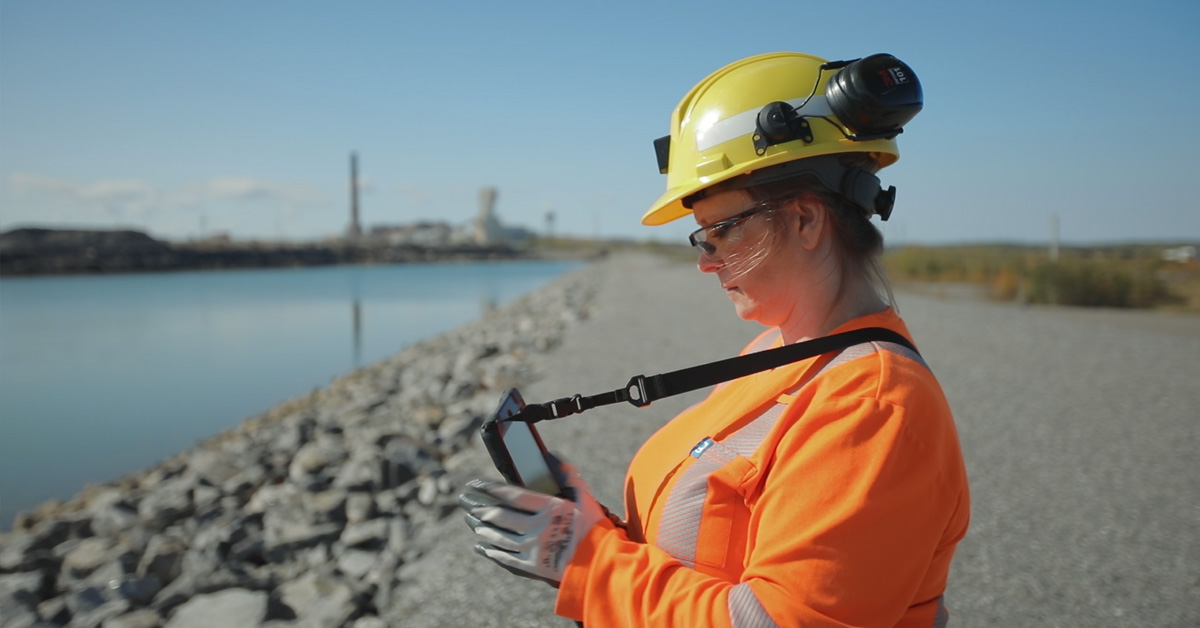“The transition to a cleaner, prosperous economy needs to be both an immediate priority and a sustained effort over the years and decades ahead. Canada must keep innovating to meet this long-term goal, strengthening and building on existing measures that fight climate change and transform the economy.” – Government of Canada
These words are guiding mining operations across the country, which have already made huge inroads in reducing emissions and their carbon footprint.
Manitoba’s Critical Minerals Strategy states, “Critical minerals are crucial for Manitoba’s growth as a low-carbon leader, and are essential to developing clean technologies, energy storage systems, electric vehicles and other technologies that advance net-zero targets.”
Environmentally sensitive technologies are now present in all new mining operations and have advanced dramatically in the last several decades.
Jack Winram is Executive Director of the Manitoba Environmental Industries Association. The Association represents companies and organizations that buy and sell goods or services that improve their environmental footprint. Coming from the oil and gas sector, he sees the need for more positive environmental practices for the mining sector to achieve future low carbon targets.
He says, “Manitoba has some unique advantages, one of which is that it delivers affordable electricity in a renewable form through its expansive low-carbon hydroelectric grid. Another is the rich lithium deposits being found here, which are a source for the batteries that are critical to the green economy and net-zero targets.”
Further to this, new technologies are allowing materials from the mining process to be managed more efficiently with a keen eye to environmental responsibility.
One example are tailings, which are the waste materials that are pumped to the surface and dried in a series of ponds. Tailings from active mines in Manitoba include minerals that had limited value previously but are now considered critical, such as lithium.
“The global demand for lithium now makes it economical to go back and work through the tailings, thereby reducing the amount of waste coming to the surface,” said Winram. Additionally, many Manitoba mines are exploring new extraction approaches, which keeps the tailing waste out of the water entirely.
Winram summarizes, “Whether it’s the circular economy or reusing our materials as an input back into our processes, these are important benefits that Manitoba can take advantage of in this new green economy. Being part of that green economy in the future is very exciting.”
Operations Director for Tantalum Mining Corporation of Canada Ltd. (TANCO) and Mining Association of Manitoba Inc. (MAMI) executive member Joey Champagne agrees on the benefits and opportunities that lay in effective environmental stewardship. “A strong regulatory environment creates a lot of opportunities for us to do better and find ways to be competitive in that market space when we are compared to others that may not be meeting those same regulatory requirements. We’re always looking for ways to be more sustainable and to better utilize not only the minerals or the products that we’re mining, but also looking at what else is in the region, and what else we can do to make things better.”
Ed Huebert is a long-time mining executive who has also served with the Manitoba government as an advisor on mining policy. He said, “I’ve watched the federal government work with provinces and industry and NGOs over the last 30 years, and it’s a constantly evolving series of standards and targets. Canada has always been looking for continuous improvements, with a focus on what is reasonably possible to achieve with the technology that’s available. I would say Manitoba, like Canada, is as tight on environmental standards as anywhere in the world.”
Stacy Kennedy, MAMI’s president and Vale’s Director of Manitoba Operations, is excited about what hitting net-zero targets will look like in the industry over the long term. She’s seen how the shift is affecting the industry in ways that benefit everyone from underground workers to communities as a whole.
“Everything that people are doing in the workplace is being improved with the shift to electric vehicles — underground scoop trams, trucks, and personnel carriers. It’s completely different than what most people imagine about working underground in mines.”
She adds, “Historically you would hear loud vehicles coming, and with combustion engines, you would have air quality challenges within mines, but it’s not that at all anymore. We drive around, there’s no noise, it’s quiet. There are these beautiful clean vehicles that have no emissions in our underground work environment.”
Kennedy sees MAMI playing a critical role in promoting the achievement of net-zero targets throughout the industry. “It’s achievable with a continuous focus on lowering emissions and advancing clean and green technologies and processes to improve our operations, our work environments, and our contributions to the economic and social fabric of our communities.
“As others have said, it’s an exciting time to be part of mining in Manitoba, and in Canada.”
You can read more about the federal government’s net-zero emission targets at: canada.ca/en/services/environment/weather/climatechange/climate-plan/net-zero-emissions-2050.html
Find out more about regulatory standards in mining here: miningmanitoba.org/mining-in-manitoba.
Did you know?
Manitoba has some of the toughest environmental and safety standards (environmental and safety) in the world, covering all aspects of mining operations from exploration to processing, progressive waste management treatment, and repatriation of out-of-commission mining sites. Learn More (link to: https://uncoverprosperitymb.ca/blog/mining-and-the-environment-a-green-news-story/)

